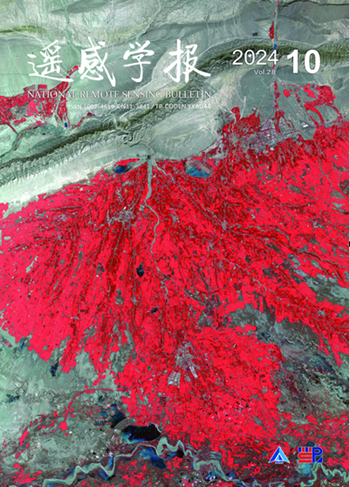Exploring Tree Species Classification in Subtropical Regions with a Modified Hierarchy-Based Classifier Using High Spatial Resolution Multisensor Data
引用次数: 3
Abstract
Tree species distribution is valuable for forest resource management. However, it is a challenge to classify tree species in subtropical regions due to complex landscapes and limitations of remote sensing data. The objective of this study was to propose a modified hierarchy-based classifier (MHBC) by optimizing the classification tree structures and variable selection method. Major steps to create an MHBC include automatic determination of classification tree structures based on the Z-score algorithm, selection and optimization of variables for each node, and classification using the optimized model. Experiments based on the fusion of Gaofen-1/Ziyuan-3 panchromatic (GF-1/ZY-3 PAN) and Sentinel-2 multispectral (MS) data indicated that (1) the MHBC provided overall classification accuracies of 85.19% for Gaofeng Forest Farm in China’s southern subtropical region and 94.4% for Huashi Township in China’s northern subtropical region, which had higher accuracies than random forest (RF) and classification and regression tree (CART); (2) critical variables for each class can be identified using the MHBC, and optimal variables of most nodes are spectral bands and vegetation indices; (3) compared to results from RF and CART, MHBC mainly improved the accuracies of the lower levels of classification tree structures (difficult classes to separate). The novelty in using MHBC is its simple and practical operation, easy-to-understand, and visualized variables that were selected in each node of the automatically constructed hierarchical trees. The robust performance of MHBC implies the potential to apply this approach to other sites for accurate classification of forest types.基于高空间分辨率多传感器数据的改进层次分类器在亚热带地区树种分类中的应用
树种分布对森林资源管理具有重要意义。然而,由于亚热带地区复杂的景观和遥感数据的限制,对树种进行分类是一个挑战。本研究通过优化分类树结构和变量选择方法,提出了一种改进的基于层次的分类器(MHBC)。创建MHBC的主要步骤包括基于Z-score算法自动确定分类树结构,选择和优化每个节点的变量,使用优化后的模型进行分类。基于高分1号/自源3号全色(GF-1/ zn -3 PAN)和哨兵2号多光谱(MS)数据的融合实验表明:(1)MHBC对南亚热带高峰林场和北亚热带华石乡的总体分类精度分别为85.19%和94.4%,高于随机森林(RF)和分类回归树(CART);(2)利用MHBC可以识别出每一类的关键变量,大多数节点的最优变量是光谱带和植被指数;(3)与RF和CART的结果相比,MHBC主要提高了低层分类树结构(难以分离的类别)的准确率。MHBC的新颖之处在于其操作简单实用,易于理解,并且在自动构建的层次树的每个节点中选择可视化的变量。MHBC的强大性能意味着将这种方法应用于其他地点以准确分类森林类型的潜力。
本文章由计算机程序翻译,如有差异,请以英文原文为准。
求助全文
约1分钟内获得全文
求助全文
来源期刊

遥感学报
Social Sciences-Geography, Planning and Development
CiteScore
3.60
自引率
0.00%
发文量
3200
期刊介绍:
The predecessor of Journal of Remote Sensing is Remote Sensing of Environment, which was founded in 1986. It was born in the beginning of China's remote sensing career and is the first remote sensing journal that has grown up with the development of China's remote sensing career. Since its inception, the Journal of Remote Sensing has published a large number of the latest scientific research results in China and the results of nationally-supported research projects in the light of the priorities and needs of China's remote sensing endeavours at different times, playing a great role in the development of remote sensing science and technology and the cultivation of talents in China, and becoming the most influential academic journal in the field of remote sensing and geographic information science in China.
As the only national comprehensive academic journal in the field of remote sensing in China, Journal of Remote Sensing is dedicated to reporting the research reports, stage-by-stage research briefs and high-level reviews in the field of remote sensing and its related disciplines with international and domestic advanced level. It focuses on new concepts, results and progress in this field. It covers the basic theories of remote sensing, the development of remote sensing technology and the application of remote sensing in the fields of agriculture, forestry, hydrology, geology, mining, oceanography, mapping and other resource and environmental fields as well as in disaster monitoring, research on geographic information systems (GIS), and the integration of remote sensing with GIS and the Global Navigation Satellite System (GNSS) and its applications.
 求助内容:
求助内容: 应助结果提醒方式:
应助结果提醒方式:


